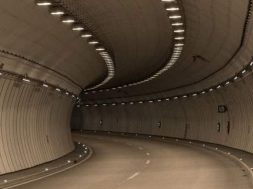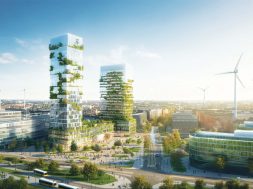Scaling new heights
Economic growth and the urban lifestyle aspiration have made tall buildings hip and happening
The recent trends of urban living reflect the continued urban renaissance in urban centres across the globe, representing the greatest cultural shift particularly during the last decade.
Urban living is the product of inter-related demographic, economic, social and cultural factors. Continuous economic growth during the past decade has made city centre living an aspiration.
For the young generation, living in the centre of metro is “the lifestyle”. Repackaged urban centres providing an arena for what cultural commentators have labelled an ‘extended adolescence’, proximity to work and leisure facilitating a ‘work hard and play hard’ attitude.
Defining tall buildingsThe definition of tall building is subjective. Tall building is a function of the relative dimensions of comparable buildings within a certain locale. A 30-storey building in proximity to 10- or 15-storey buildings could certainly be perceived as ‘tall’ whilst in the environment of mature high-rise development in a world city it would not.
Important aspects for a tall building“Clearly, any building of any height would fail without a well-engineered structure,” says Daniel Safarik, Editor, Council on Tall Buildings and Urban Habitat.
When the Illinois Sky City in Chicago was built in 1956, it was outrageous building with 528 floors, each with a height of 10 feet. And it was possible because of the vision of legendary Frank Lloyd Wright, an Welsh-American architect. Its structure is considered “the guideline” of today’s skyscraper.
Then there is the science of wind. “Wind engineering takes on a particular importance with tall buildings, as wind speeds increase with height, and the height-to-width ratio of a building becomes more of a factor,” explains Mr Safarik. “And all buildings have a responsibility to meet the street – that is, operating at the human scale where humans interact with them, regardless of their ultimate size.”
Importance of tall buildingsBeyond their sheer height, tall buildings are important also. Tall buildings push the limits of engineering so that it can solve problems for the rest of the built environment. According to Mr Safarik, “Skyscrapers are some of the most heavily engineered structures on the planet. The metaphor we use is that skyscrapers are like the space programme. There was no immediate commercial justification for putting a man on the moon or a rover on mars, but what we learned from those experiences. It’s not just about the makeup of our galaxy, but how our technologies can perform in all kinds of extreme conditions is very valuable, scientifically and commercially.”
Evolution of the concept of tall buildingsThe most essential real estate concern is how to maximise profit on a land, and the answer is “go higher.” To do that, innovations like the steel frame, the elevator, and the bundled tube were invented.
If Wright showed the way how a tall building can be built, Fazlur Khan took it to a new level. Khan, the engineering genius from Skidmore Owings and Merrill, invented a new way of building tall.
In the middle ages, masonry structures continuingly fell short to reach the height of European cathedrals: both the practicalities of hauling stone skywards with only wooden winding gear and wooden scaffolding. In the late 19th century, we saw the steel-framed buildings, but Fazlur Khan created the unconventional concept — bundled tube. He reversed the logic of the steel frame, making building’s external envelope – given enough trussing, framing and bracing – the structure itself. The “bundled tube” concept gave a new look to the skyscrapers which started looking more like a sculpture.
And it was Khan’s revolutionary idea that makes world’s tallest building — Burj Khalifa — a reality. According to Mr Safarik, “The Burj Khalifa does represent a very small group of super- and mega-tall buildings, whose primary purpose is to achieve height for ‘its own sake’.”
Tall building trends in India“The trend about tall buildings is gaining traction in urban India,” echoes Somasundaram Senthilkumar, Business Head – Projects, Architectural Division, Asahi India Glass Ltd. “With the increasing population and demand for accommodation, space has become a commodity these days. Due to high land prices, construction costs and unavailability of land, people opt for high-rise buildings.” A few years back, Mumbai was the only city in India with high-rise buildings. It still continues to see the highest demand for tall buildings as the only option to grow there is vertically. However, other Indian cities will also see various similar projects in the future. The demand for skyscrapers is certainly growing in India since they are efficient with respect to land use, serve many people simultaneously from single set of infrastructure and service and provide more space.
However, Kamlesh Choudhari and Jawahar Hemrajani, Directors, Glass Wall Systems (India) Pvt. Ltd., believes that India needs to get its own standards in construction to make a sustainable, low-cost or high-cost project. They also share the importance of sustainability. “Tall buildings in urban India are a key to provide insights on how to re-make existing cities in a sustainable way,” they added. “Advancement in technologies and increasing population will help keep the cities limited into its geographical location accompanied with required infrastructure.”
Future of tall buildings in IndiaIndia is competing with China in terms of urbanisation, but India still has much more urbanising left to do. According to the UN Population Fund, India is only 29 per cent urbanised while China has hit 42 per cent.
As far as the future is concerned, as India not only urbanises but rises as an economic power, we will see not only more tall buildings, but better designed and constructed ones, because the Indian economy will be too large to ignore. India is on its way to be stitched into the global business world, which relies on transparency and data to function.
Cookie Consent
We use cookies to personalize your experience. By continuing to visit this website you agree to our Terms & Conditions, Privacy Policy and Cookie Policy.









